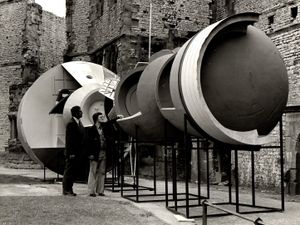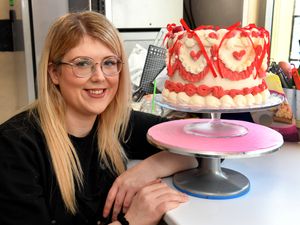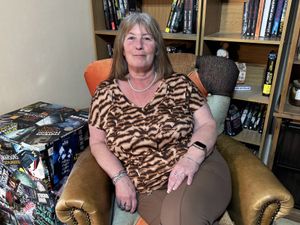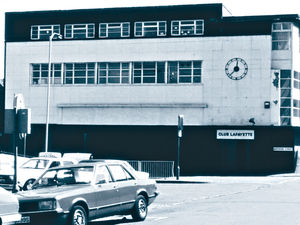Sir Kenneth Branagh says ‘the unexpected is always simmering in the air’ in new Poirot film
Of all the places to choose for a self-imposed exile, Venice is perhaps the most beautiful option. Sun-soaked days, gorgeous architecture, charming gondola rides… it’s no surprise that the famous detective, Hercule Poirot, has chosen the Italian city for his retirement.
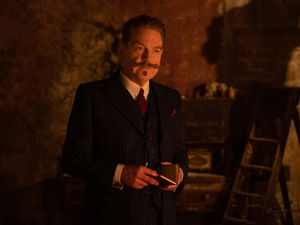
When we meet the celebrated sleuth in A Haunting In Venice – the third Poirot film directed by, and starring, Sir Kenneth Branagh – it is Halloween. But the world, quivering in the wake of the Second World War, has seen quite enough horror.
Poirot, too, has seen enough. His career has been dedicated to weeding out the worst of humanity by solving crimes and investigating mysteries, and the terror of war and genocide has led him to give up on detecting once and for all, spending his time doing all he can to avoid thinking about crime.
But when he receives a visit from an old friend, top mystery writer Ariadne Oliver, played by Tina Fey, Poirot finds himself investigating once again – though Ariadne insists that this time, it’s not a crime, rather a seance in a haunted Venetian palazzo that she’s trying to prove isn’t real.
When one of the guests at the seance is murdered, the moustachioed detective is plunged back into a world of sinister secrets and sleuthing, this time with a haunting supernatural edge.
Based on Christie’s 1969 novel Hallowe’en Party, A Haunting In Venice adds a thrilling twist to the mystery stories Poirot fans know and love, and shows a new side to the detective.
“Our goal was always to try and produce that sort of knot-in-the-stomach, edge-of-your-seat experience for audiences,” says Sir Kenneth, 62, speaking before the Sag-Aftra strike action.
“We wanted to take them to Venice and give them that vicarious thrill of being in this really quite beautiful, labyrinthine, electrifying city.”
“Death on the Nile was set in 1937,” Sir Kenneth continues, referring to his previous Poirot film, released in 2022.
“This film takes place 10 years later. There’s been a traumatic world war in between, one in which Hercule Poirot will have travelled and been aware of the carnage and the devastation.
“It is a kind of despair that we find him in at the beginning of this film; a disappointment that another generation could have gone to war after the one that we saw in Death On The Nile that he fought in himself. And it is part of his decision to hide in plain sight, to no longer be part of this world where violence, crime and murder have left him pessimistic about his fellow man.
“So, he goes to a city where he can be anonymous.”
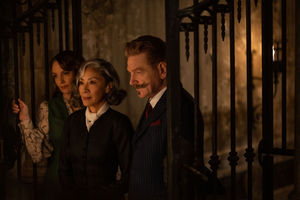
“I think one of the things that Ken and Michael Green, the writer, have brought through these three films is a depth to Poirot, and an investigation of his character and his psyche,” says executive producer, and Agatha Christie’s great-grandson, James Prichard.
“Famously, my great-grandmother didn’t explore Poirot in that way, in that detail, really. He first appears in 1920 in The Mysterious Affair At Styles – this book, Hallowe’en Party, is written in 1969, (and) he’s still going until Curtain in 1976. And he doesn’t really change.
“But I think Ken and Michael wanted to do a little bit more with him. And here, he starts the film retired, seemingly, again. Ariadne Oliver persuades him out of that retirement. And then he kind of has this torture of wondering whether there is something that’s beyond even him, whether there is a supernatural element, whether perhaps there is a God. And he plays with that.
“This is part of, I guess, a journey that Poirot’s on, and he is a different man at the end of the movie than he was at the beginning.”
What makes Poirot’s introspective journey all the more fascinating is his brush with the supernatural in A Haunting In Venice. A meticulous man of logic, Poirot is not one to succumb to scary stories of ghosts and spirits but, as Sir Kenneth says, “he has a poetic, romantic side to his tough, detective persona – part of him wants to believe”.
It’s one thing for Poirot to attend a seance – even one hosted by the famous clairvoyant Joyce Reynolds, played by Oscar-winning actress Michelle Yeoh – but the spooky goings-on are compounded by an inexplicable murder that takes place during the gathering.
Almost the entire film takes place in a haunted Venetian palazzo, owned by retired opera singer Rowena Drake, which used to be an orphanage where terrible things took place. It’s also where Rowena’s daughter, Alicia, died a year ago, hence the gathering at which she hopes to conjure her spirit.
But, as Poirot soon discovers, not everything is as it seems – but are the bizarre events the work of the supernatural or is there a violent criminal in their midst?
Having the film’s events unfold in a single location is a bold but effective choice from Sir Kenneth, and it afforded production designer John Paul Kelly the opportunity to not only craft an impressive set, but to treat it like a character, a suspect in the mystery.
“What was interesting was the palazzo has a role in the film that’s quite different to where I would normally create a background for the actors – in this case, the palazzo was very much a character, it’s one of the suspects,” he says.
“So it was very important that it had its own individuality, and its own feel to it, but you were also in it for an hour and a half. One of Ken’s notes to me at the very beginning was, how do you make this film varied and interesting for that length of time?
“We tried to create an environment that moved from maybe the more traditional dank, basement-y, cellar-like, haunted-house feeling, which is very true to Venice, to something that maybe felt more cathedral-like and threatening in its grandeur…
“It was trying to create lots of different feelings to show a variation but at the same time stick quite closely to the idea of this house being one space and a character in the story.”
Unable to film in an actual Venetian palazzo due to access limitations and the necessity to create a building that’s “full of tricks”, Kelly instead built an atmospherically claustrophobic set at Pinewood Studios in the UK. Each set was completely enclosed, complete with ceilings, which lent themselves well to the immersive filming style Sir Kenneth wanted to employ, and contributed to the overall feeling of the film.
“There needed to be a sense of unease,” says Sir Kenneth.
“The unexpected is always simmering in the air.”


